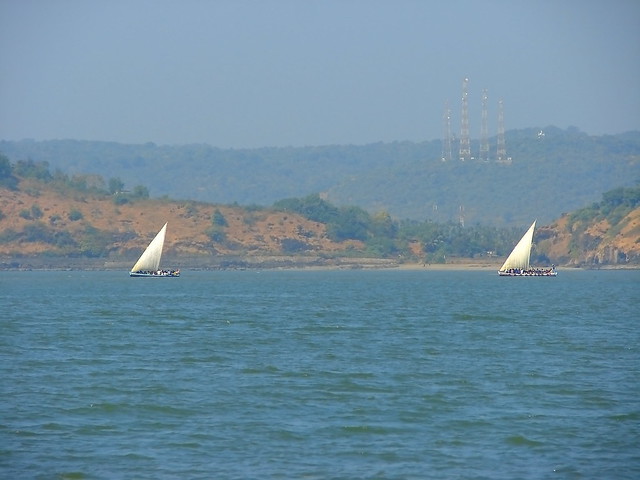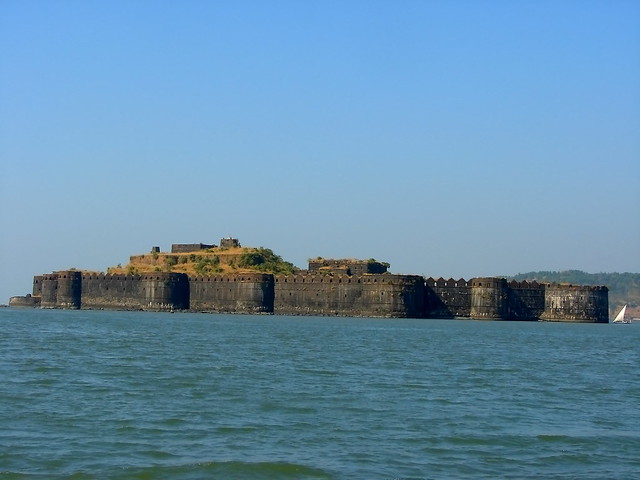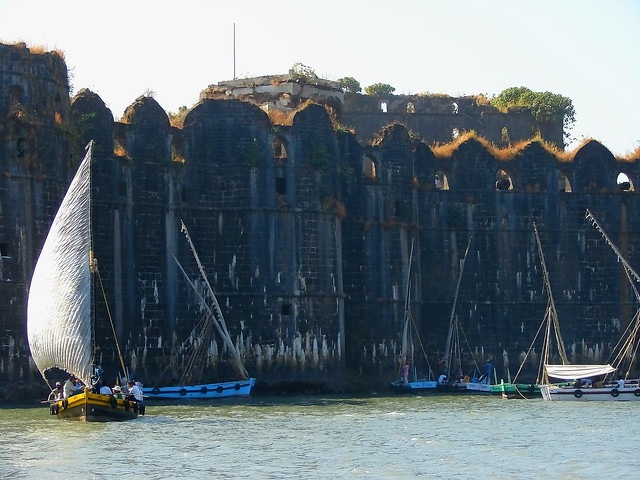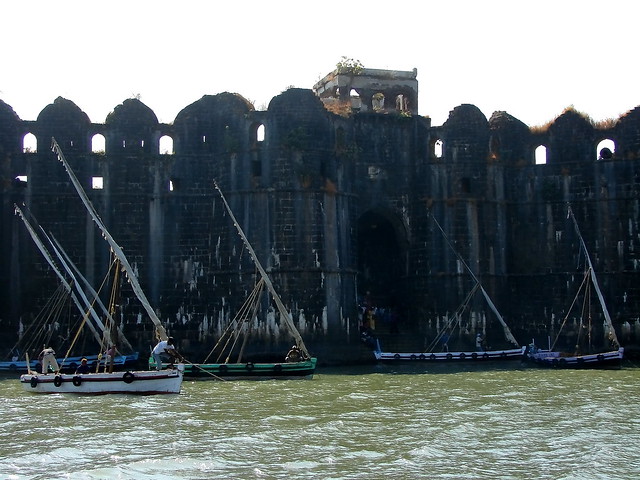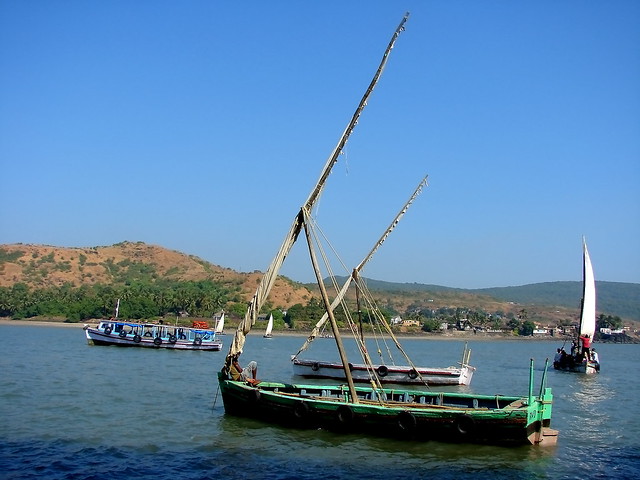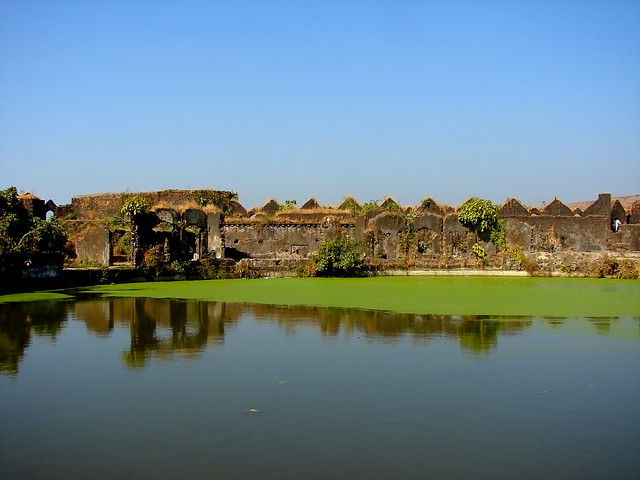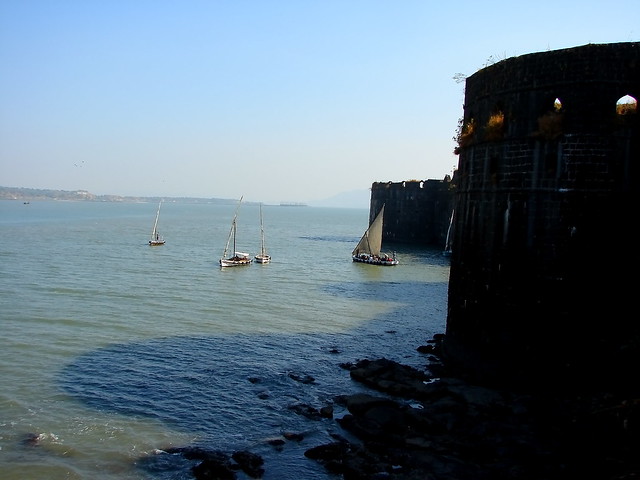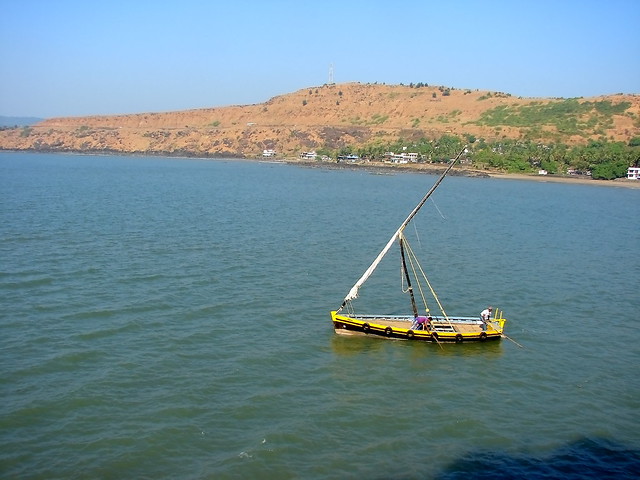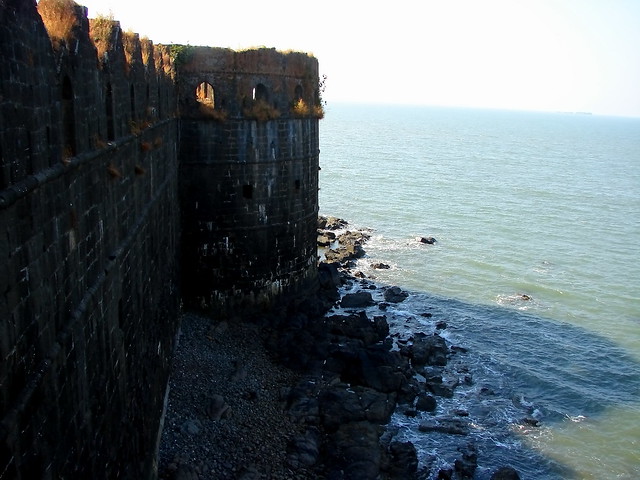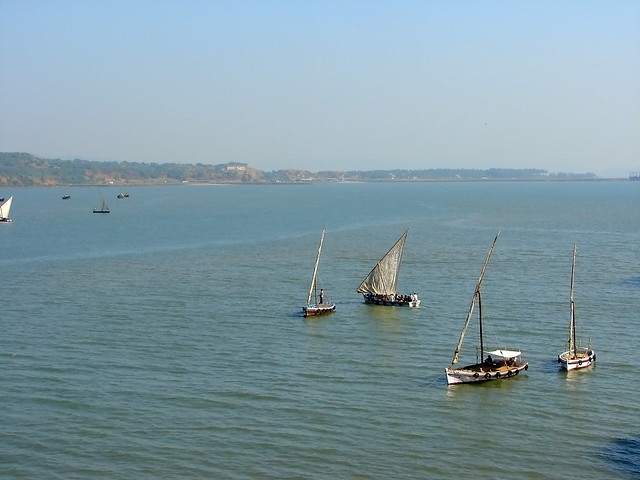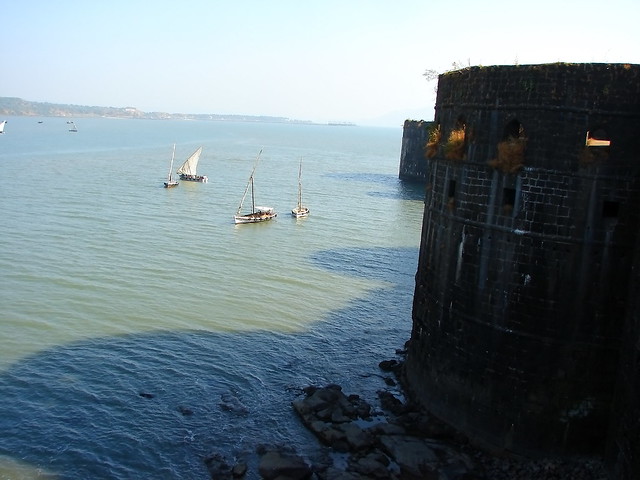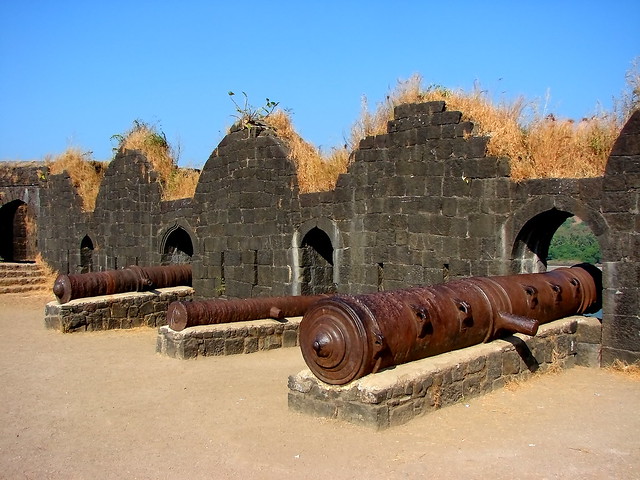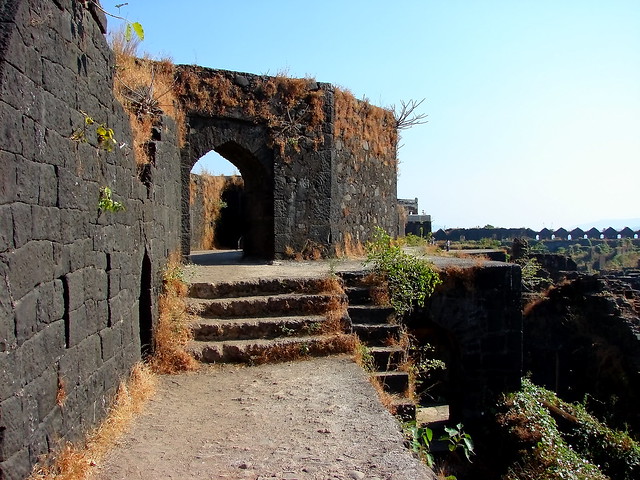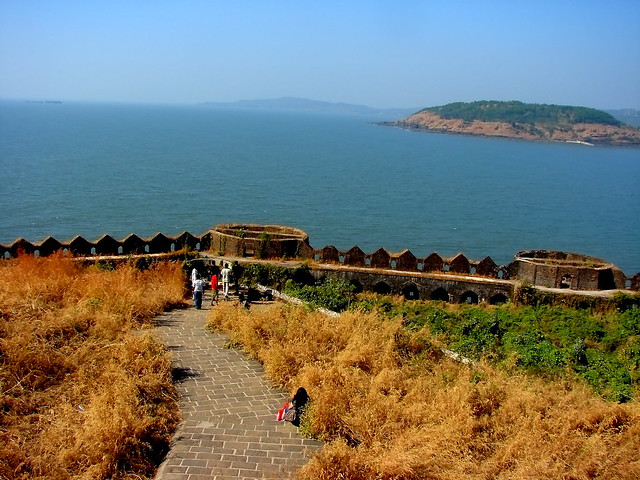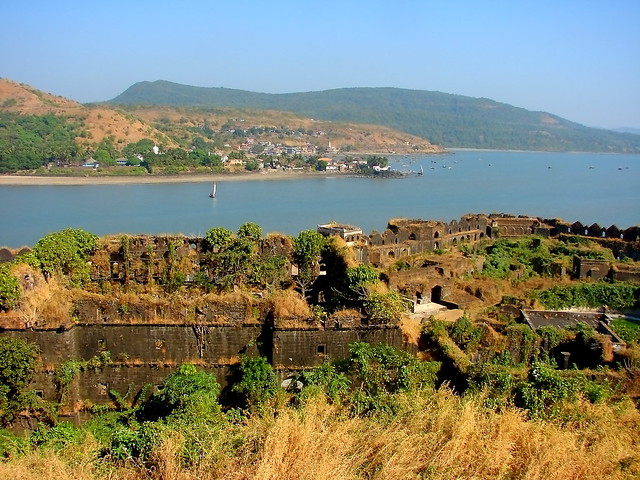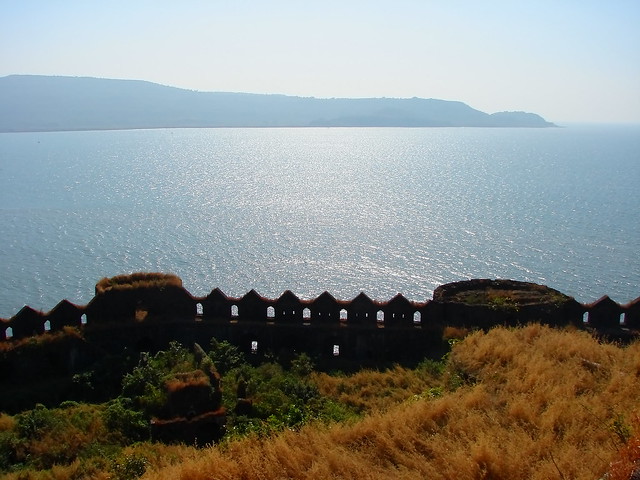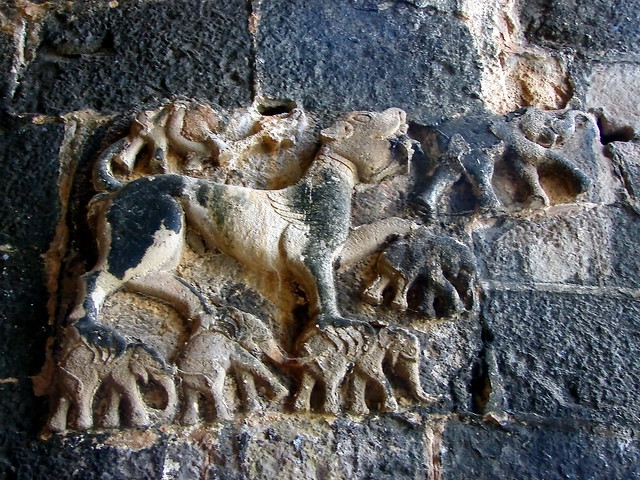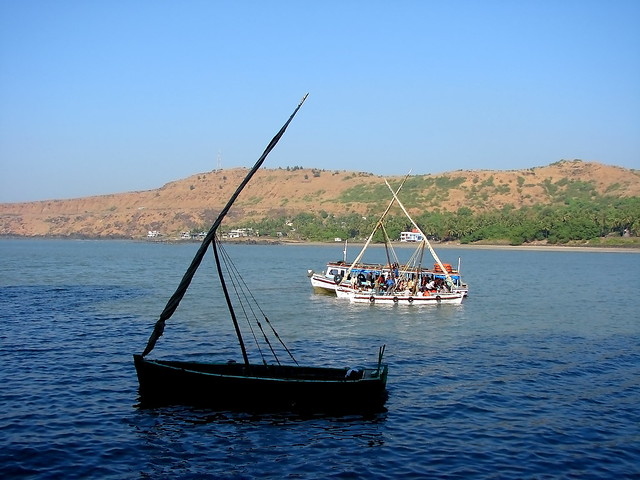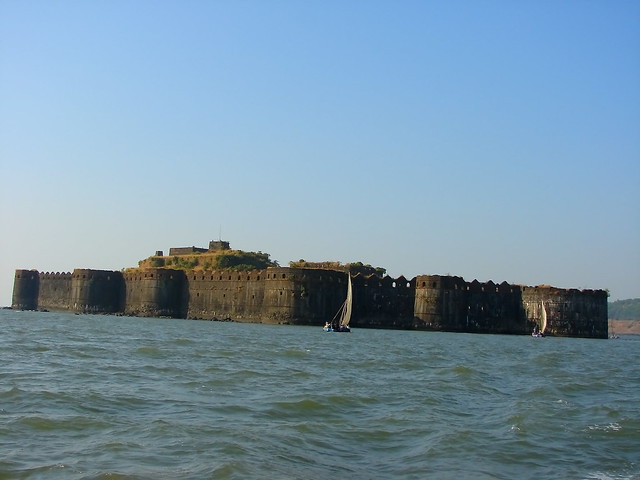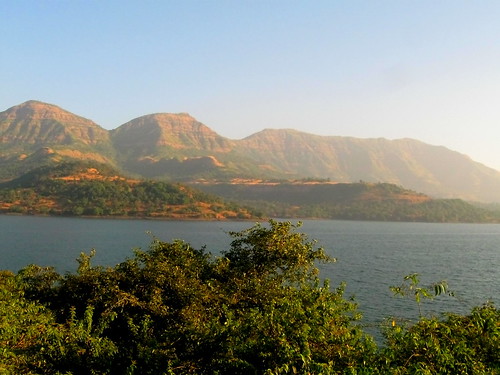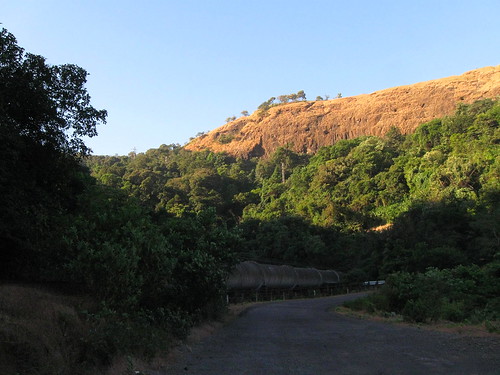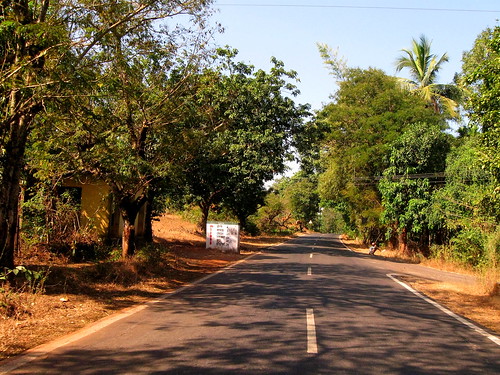Chapter 3: Murud-Janjira – The Unconquered Fortress of Western Coast
Janjira is arguably the only unimpregnated fort in the Western Coast. It is situated within the sea, built over a rocky island, 3 Km from the Murud Creek, situated besides the Murud village. This fort is considered to be one of the strongest marine forts in India. Accessible from both the Rajapuri and Dighi jetty on ferries and boats, our intention was to take a launch from the Dighi jetty.
We, wasting no time once we reached Diveagar, plied straight towards Dighi Jetty. The road was too scenic through the hills. Around after half an hour, we reached the Dighi jetty. There was no one to be seen at the ticket counter. We were told by a local that the ferry has left and we have to wait until the other one comes back. We did so. The man on the counter came back and announced, without any remorse, unless there are 12 people at least, he wouldn’t start the ferry. It is a unique rule of demand and supply. Otherwise we have to reserve the whole ferry and venture. We were only 4 and were weighing our options, we didn’t have too many. Another family of 4 came and were told the same story. 8 of us were thrown a small riddle in front of us, the answer of which was pretty clean – money. Fortunately 2 more people turned up and the 10 of these mixed-bag tourists equivocally convinced the man to take us with no extra cost. He gave in under our perseverance.
We sailed through the sea to reach the fort. At certain points, the boat rocked like a pendulum against the waves, to give us a chill through the spines, but we survived.
It took around 30 minutes to rach to a point in the middle of the sea from where the gigantic structure of the sea fortress became visible.
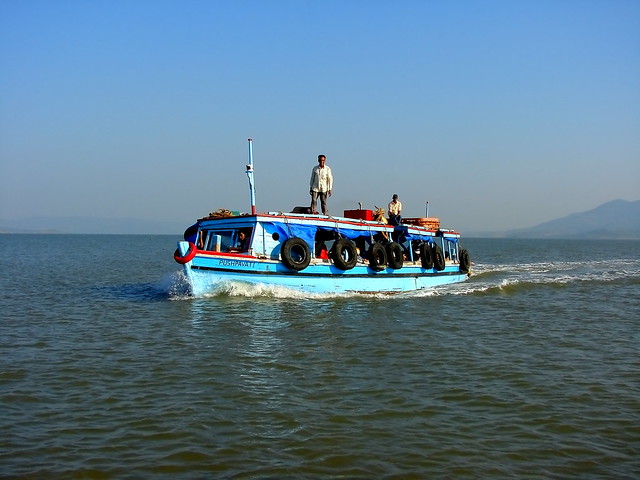 |
| Obviously, this wasn't our boat |
 |
| The first glimpse of the fort |
Originally the fort was built in the late 15th century by a Koli chief, just as a small wooden structure. A general of the Nizamshah of Ahmednagar, Pir Khan, captured the fort. The famous Malik Ambar of the Indian History, who was the Abyssinian-origin Siddi regent of Ahmednagar kings, strengthened the fort. From then onward the Siddis became independent rulers, forming alleys to Adilshah and the Mughals as demanded by the times.
The fort was built in such a way that unless you come face to face with the main entrance, the entrance wouldn’t be visible and it would be well hidden behind the bastions. The strength of the fort was still evident from the 19 intact bastions.
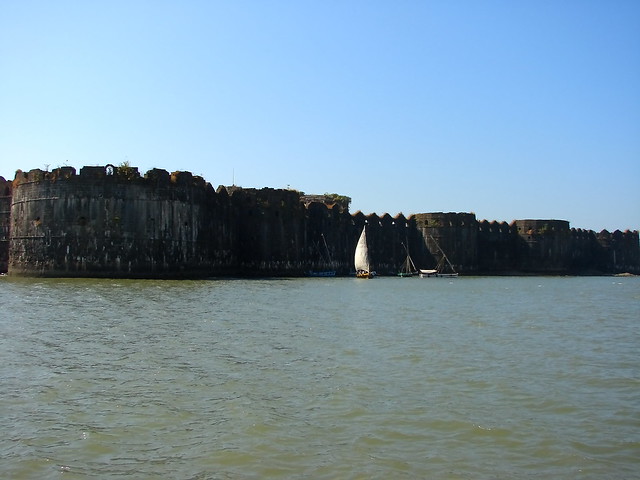
Our launch anchored itself and a small sailboat took us to the main gate, from where we started roaming around the fort.
We came to know from the local guides that though the fort was surrounded by sea (saline water), it had and still has its own supply of fresh water from underground and it never depended on outside world for its water supply. That really was an incredible fact. Not only this but we were also astonished knowing that it had, though blocked now, a tunnel which opened in Rajapuri – a connection to mainland and an escape route, which probably was never needed.
Despite repeated attempts, the Portuguese, the British and the Marathas failed to capture this fort. The great Shivaji Maharaj himself tried his luck 6 times, but with no avail. The Marathas attempted to scale the 12 meters high Granite walls but failed in all attempts. Sambhaji, Sivaji’s son, even attempted to tunnel his way into the fort but was unsuccessful as well.

Our launch anchored itself and a small sailboat took us to the main gate, from where we started roaming around the fort.
We came to know from the local guides that though the fort was surrounded by sea (saline water), it had and still has its own supply of fresh water from underground and it never depended on outside world for its water supply. That really was an incredible fact. Not only this but we were also astonished knowing that it had, though blocked now, a tunnel which opened in Rajapuri – a connection to mainland and an escape route, which probably was never needed.
Despite repeated attempts, the Portuguese, the British and the Marathas failed to capture this fort. The great Shivaji Maharaj himself tried his luck 6 times, but with no avail. The Marathas attempted to scale the 12 meters high Granite walls but failed in all attempts. Sambhaji, Sivaji’s son, even attempted to tunnel his way into the fort but was unsuccessful as well.
There were many canons of native and European make rusting on the bastions. Though many of them removed, we found some heavy ones still resting on top of the bastions facing towards the Sea. One of the humongous canons was supposed to be the third largest canon in India; the first one is kept in Bijapur fort. It was so heavy that it took a couple of dozen men to assemble it.
Now in ruins, the fort in its glory days was a full-fledged living fort with all the necessary facilities, e.g., palaces, quarters for officers, mosque, a big fresh water tank, kitchen etc.
There was a cluster of staircase through which one can climb to the top of the fort. From the top, one could watch all directions towards the sea to monitor any enemy activities.
In present days, the tourists simply flock to the top to enjoy the vastness of the sea and the picturesque beauty. We were no exception. When we reached to the top, we were stunned by the magnificent scene which presented itself in front of us. Blue seas seemed to be one and the same with the blue hue above at a distance. Small boats sailing with the wind, coconut trees at the coastal sides, cute little Konkani villages constructed a combination which was picture perfect, literally.
On the outer wall of the main gate, there was a sculpture depicting a tiger-like beast clasping elephants in its claws. The local guide elaborated that the scholars even failed to interpret its meaning, but this symbol was the emblem on the coins issued by the Siddi rulers.
It took us around a couple hours to take a detailed look around the evry nook and corner of the fort.
There was a cluster of staircase through which one can climb to the top of the fort. From the top, one could watch all directions towards the sea to monitor any enemy activities.
In present days, the tourists simply flock to the top to enjoy the vastness of the sea and the picturesque beauty. We were no exception. When we reached to the top, we were stunned by the magnificent scene which presented itself in front of us. Blue seas seemed to be one and the same with the blue hue above at a distance. Small boats sailing with the wind, coconut trees at the coastal sides, cute little Konkani villages constructed a combination which was picture perfect, literally.
On the outer wall of the main gate, there was a sculpture depicting a tiger-like beast clasping elephants in its claws. The local guide elaborated that the scholars even failed to interpret its meaning, but this symbol was the emblem on the coins issued by the Siddi rulers.
It took us around a couple hours to take a detailed look around the evry nook and corner of the fort.
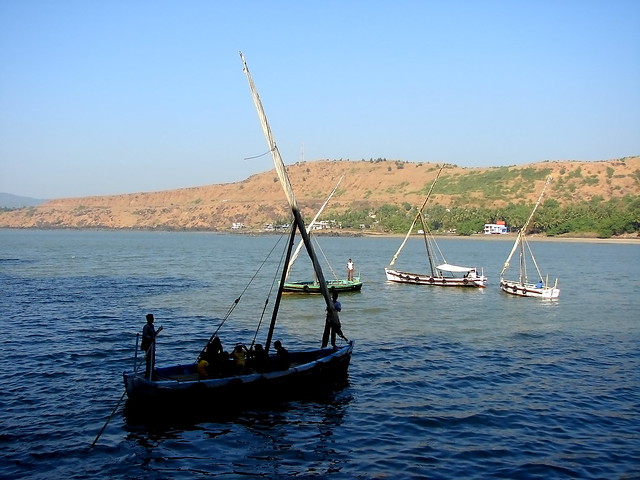
In the reverse process, the boat took us to the ferry and leaving Janjira behind but with a lasting impression in our minds, the ferry took us back to the Dighi jetty.
We then drove to our homestay, where we had some delicious Konkani food and after some rest we set off towards the marvellous Diveagar beach, to enjoy a soothing sunset.

